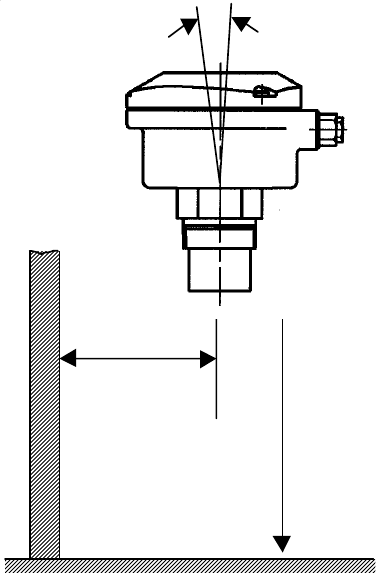
7
IP2046/IM
Nov 2006
• If the transmitter is mounted in an enclosed tank, avoid mounting the transmitter in the centre of the
tank roof as this could act as a parabolic reflector and create unwanted echoes. Avoid applications
where heavy condensation could form on the transducer face.
• If the transmitter is mounted in a stand-off or nozzle, it is always preferable that the transmitter face
be at least 5mm proud of the stand-off such that it protrudes beyond the stand-off and into the tank.
If this is not possible, see section 3.2.
• If the transmitter is used in environments where direct sunlight can cause very high surface
temperatures on exposed instruments, it is recommended that the installer should construct a
suitable sun-shade to protect against this.
• Remember that the minimum operating range of the transmitter is 0.45m. The transmitter will not
detect any liquid surface closer than 0.45m to the transmitter face.
3.1.2 Liquid surface conditions
• Foaming liquids can reduce the size of the returned echo as foam is a poor ultrasonic reflector. It is
always preferable to mount an ultrasonic transmitter over an area of clear liquid, such as near the
inlet to a tank or well. In extreme conditions, or where this is not possible, the transmitter may be
mounted in a vented stilling tube provided that the inside bore of the stilling tube is at least 100 mm
(4”) and is smooth and free from joints or protrusions. It is also preferable that the bottom of the
stilling tube does not become uncovered, thus preventing the ingress of foams.
• Beware of mounting the transmitter directly over any inlet stream.
• Liquid surface turbulence is not normally a problem unless it is excessive. In most cases, the effects
of turbulence are minor, with excessive turbulence being catered for by fine tuning the transmitter on
site if necessary.
i.e. D Min = 0.45m (18”)
D Max = 11m (433”)
C = 0.3m (12”) min to 0.88m (36”)
Max 3°
C
0,11m/m
D
(1.3"/ft)


















